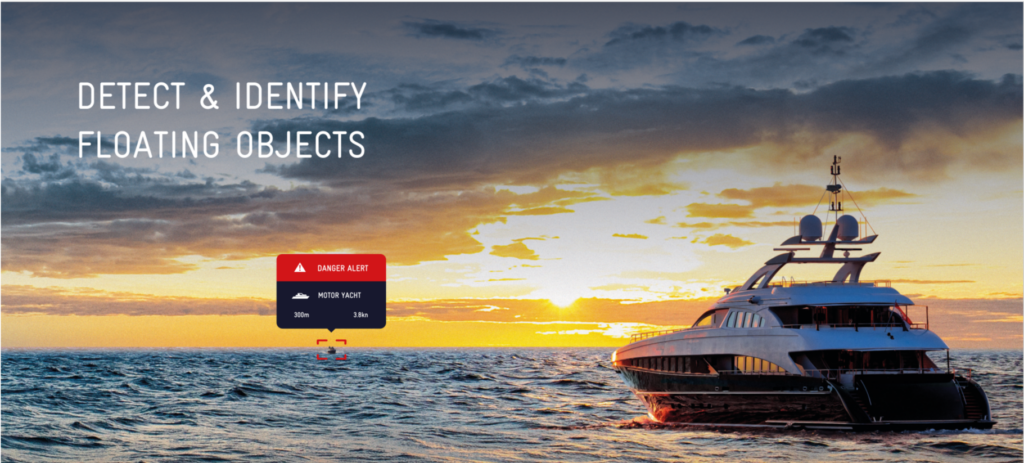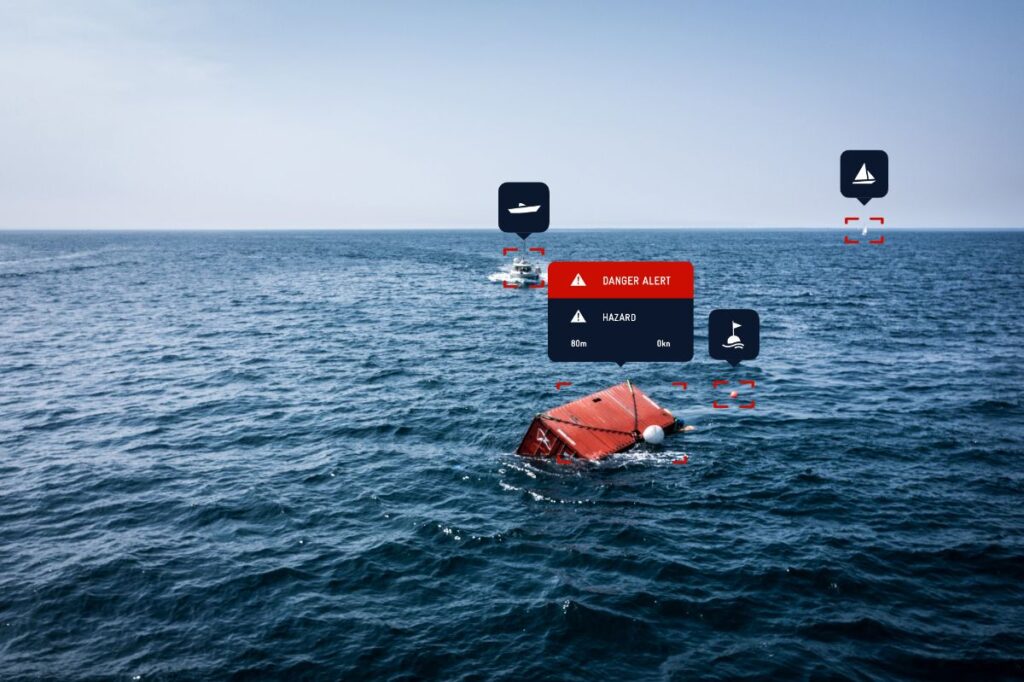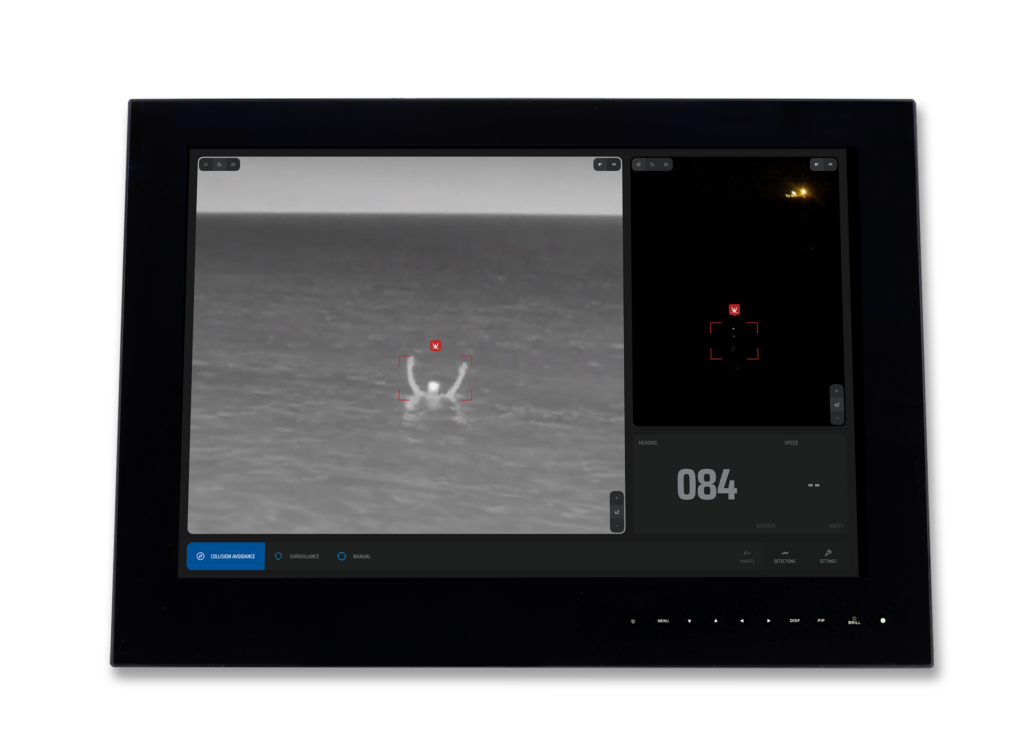Home » Innovation SEA.AI at Cannes Yachting Festival 2024 Using Artificial Intelligence to Make Navigation Safer

AIS does a good job in tracking and identifying vessels which have it and which have it switched on, superimposing this data over an electronic chart which in turn shows the position of land, depth contours, fixed navigation marks, obstructions, etc. Meanwhile radar will display unidentified targets strongly, weakly or not at all depending upon their range, the strength of the target’s radar signature and its resulting ‘echo’ and the quality of a yacht’s radar set.
Enter SEA.AI, which can identify potential collision threats, enhance surveillance at anchor, day and night, at short-medium range – typically a weak spot of radar. In the same way as someone on watch – albeit in a vastly augmented way – SEA.AI looks ahead or around with its product Sentry’s 360° surveillance capability, via its multiple daylight and infra-red cameras, fitted inside a compact waterproof unit. This unit is typically mounted at the highest point of a boat, such as the masthead on a sailing yacht or on a motor yacht’s antenna mount.
The truly ground-breaking feature of SEA.AI is its use of state of the art ‘machine vision’ combined with AI to identify targets regardless of the time of day or night, the conditions and visibility of the target or the size of the sea state. Once a target has been extracted from the ‘noise’ of its surroundings, SEA.AI then enhances the image to determine whether or not it represents a potential collision threat. It performs this in real time using AI to compare the images of a target taken by cameras with images from its own comprehensive database of targets. This database is constantly growing and ever-improving and now contains 10+ million examples. Potential threats that SEA.AI can identify that other technology might not, include craft such as small fishing boats or pleasure craft without AIS, while it can also help in the avoidance of floating obstacles not marked on charts, large fish and cetaceans and flotsam such as logs and containers – all of which can cause serious or even catastrophic damage to a boat. Integral to SEA.AI are of course alarms to alert the crew to potential hazards.

SEA.AI’s infrared cameras powered by AI, are also potentially life-saving, capable of detecting a person overboard day and night. This capability significantly enhances the product’s appeal for both the Offshore and Competition series, designed for sailing yachts (effective up to 100 meters), and the Sentry series, tailored for motor yachts (effective up to 700 meters).

SEA.AI teams based in Austria, France, Portugal and the US, have transformed road-based object detection technology to enhance safety in the maritime sector. The company drew on the principles of Advanced Driver Assistance Systems (ADAS), commonly found in modern vehicles. These systems utilize computer vision to detect potential hazards and can automatically initiate emergency responses such as braking. By adapting automotive vision technologies, SEA.AI aimed to tackle unique navigational challenges at sea, such as manoeuvring in crowded waters and avoiding uncharted obstacles. Similar to its impact on road safety, where cameras, radar, and lidar were used to monitor a vehicle’s surroundings and react proactively, SEA.AI’s Machine Vision technology was designed to enhance situational awareness and prevent collisions.
Early SEA.AI equipment, known as OSCAR, was pioneered in the IMOCA class, the 60-foot yachts famously used in the Vendée Globe. Systems were installed on more than half of the IMOCAs that competed in the 2020 edition of this singlehanded, non-stop, round-the-world race.
Nicolas Lunven, skipper of the IMOCA Holcim PRB, gearing up for this next grueling single-handed, unassisted round-the-world challenge, shared a close call during the Transat Jacques Vabre with Samantha Davis:
"Two years ago, during the Transat Jacques Vabre with Sam, we had an incident where we narrowly avoided a collision with a small fishing boat off the African coast. Thanks to the SEA.AI system, we were able to steer clear of disaster. The sun was directly in front of us, making it difficult to see ahead. However, the SEA.AI system detected the boat, triggered the alarm, and allowed us to change course in time."
Nicolas Lunven, skipper of the IMOCA Holcim PRB
Visit SEA.AI at the Cannes Yachting Festival from September 10-15 at stand PAN 345 to discover the latest innovations, including the new generation Sentry, Sentry Black, and Brain—the best maritime machine vision on the market, designed to enhance the performance of existing thermal cameras on board. Learn about upcoming developments on the company’s roadmap and experience a real-time demo from Cascais, Portugal.
Schedule a meeting to ensure we have the dedicated time you deserve. New technology thrives with the support of media people, and by sharing these advancements, you too can help save lives at sea.
This Friday (28th April 2024), the Transat CIC will set sail from Lorient in the Western France to New York in the East Coast of the USA. This race will feature 33 IMOCA of which 20 are equipped with SEA.AI Machine Vision System.
SEA.AI demonstrated its machine vision at the Congressional Boating Caucus briefing on April 11, 2024, in Washington, D.C..
Baltic Yachts, a Pioneering Shipyard, integrates SEA.AI Machine Vision Technology to its Range of Innovative Options